#Pros and cons of print on demand
Explore tagged Tumblr posts
Text
The Pros and Cons of Print on Demand Business: Is It the Right Choice for You?
Are you looking for the pros and cons of print on demand business? Print on Demand (POD) is an increasingly popular business model. It is especially attractive to aspiring entrepreneurs eager to make money online. They can avoid dealing with inventory or production headaches. DisclosureSome of the links in this post are affiliate links, meaning that at no additional cost to you, I may earn a…
0 notes
Text
IngramSpark: Good or Nah?
I decided to work with them last minute to set my book up for success, and, in case they screwed me over, I could hate them in a properly informed manner.
So!
IngramSpark (IGS) vs. Amazon (KDP) so far: A detailed comparison.
Spoiler Alert: FUCK INGRAMSPARK

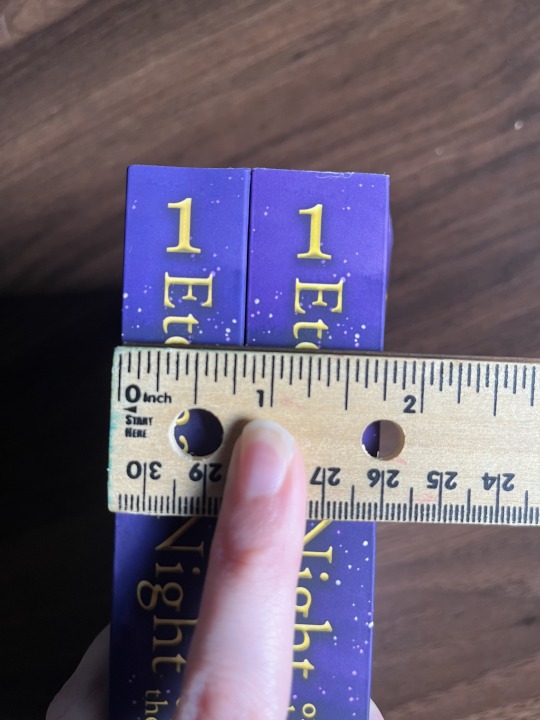
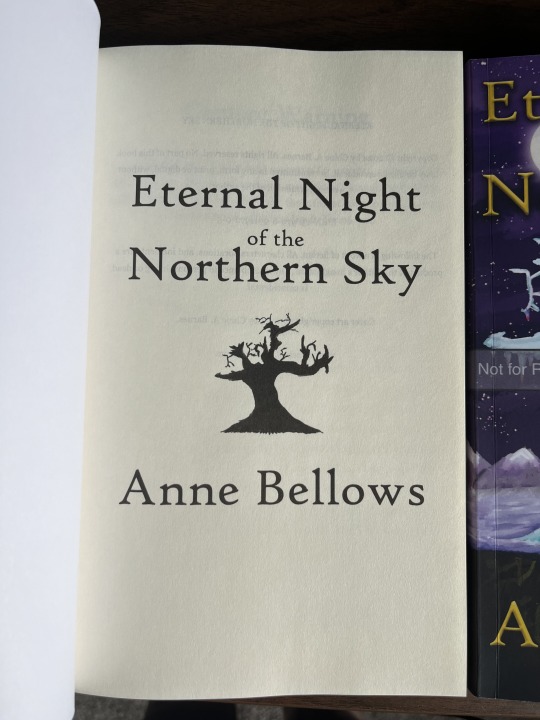
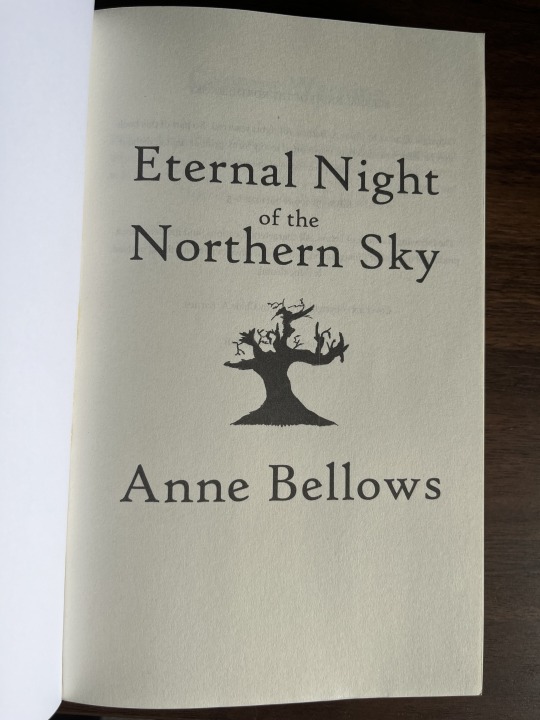

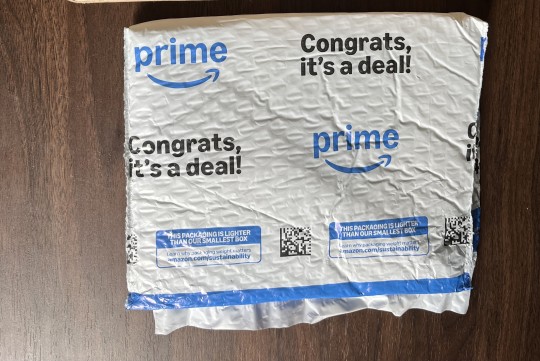
Alrighty these are two proof copies (author copies) of the exact same book made with the exact same PDFs. IGS is on the left in all pics.
Stuff to note:
The IGS copy is slightly greener, the purple is less vibrant. KDP made the exact colors I painted this with in photoshop.
The KDP book is slightly thicker and while the spine print is slightly off center, the front cover is perfectly centered. Compare both of the lower moons on the right side and it's very obvious that IGS cut theirs incorrectly. It's cut incorrectly because their paper is thinner, thus needing a slightly narrower print PDF (which isn't something they would tell you).
KDP is slightly thicker because they used thicker paper. Theirs is less polished creme, you can feel more of a grain of the pages, but because they're thicker, they're less transparent. I can read straight through to not only the back of the title page, but straight onto the next piece of paper for the IGS copy, and theirs cost more to print.
KDP shipped in lighter packaging, which meant my copy got a little banged up as opposed to the cardboard coffin the IGS book was in. Pick your poison.
KDP
PROS
A breeze to work with in most areas. I did not need to use customer service, so I can’t comment on that, but I’ve heard it’s superior to IGS in every way. They do have a community chat that I have used when confused (more below) and pages upon pages of how-to resources.
Simple user interface, very easy to click through all the set-up menus and not once did it freeze or crash on me (more below).
Did not use their formatter or cover generator, I used Adobe and did my own so I can’t comment on their quality.
Their “print previewer” was fantastic. I could click through the whole book and they explained very thoroughly where some issues were and what I should look out for and they let me use my own files without issue instead of having to build them in the platform.
Their royalty rate is the best you can get in this industry, because they’re not selling to anyone but themselves so there’s no middle man taking a cut of the profit.
Print quality of the book itself is fantastic. Only thing I miss is the ability to emboss, but no print-on-demand company does that as far as I’m aware. The colors were an exact match to my design in Adobe, I have no complaints.
Instant reports and near-live report refreshes for ebooks. Print copies don’t register on reports until the book ships, but Amazon prints and ships within ~2 days.
Because it’s Amazon, even though proof copies aren’t applicable with Prime, my copy still got here in 5 days including print time. My print copy totaled the print cost plus $3 in standard shipping that I could have rushed.
It did get a little banged up on the bottom but I think that was during shipping not at the printing press.
If you’re really strapped for cash, they do offer free ISBNs *but these are KDP only ISBNs, you don’t own them, and they are non transferable between vendors and POD companies. Bite the bullet and just save up for your own ISBNs and buy them in bulk if you can and you plan on publishing at least 2 books in your lifetime (like a paperback and hardcover of the same book, even).
After I submitted my ebook for preorder, I kept finding little details to fix and lines I wasn’t happy with that got nixed at the 11th hour. Updating this was seamless and free and the updated versions were processed within 6 hours or so. Amazon did not lock in the files to the date the preorders were set like IngramSpark would have.
CONS
They still don’t have paperback preorder, but they do have a feature where you can submit for a future release, which is just giving your files over to go live on a set date. Thing is: When you get to the end of the setup, there’s a button that says something like “submit for publication” which does not actually mean “move your publication date to right now” like I thought. So I missed my paperback date by 2 days.
Their proof copy has that annoying grey “Not for Resale” stripe across the cover so it looks wonky in marketing images.
They have a “cover art size calculator” feature, which did not line up with the actual file size I needed come submission time, off by a few millimeters. Which meant resizing in Photoshop and it was incredibly annoying and tedious.
Upon finally hitting the “publish” button Amazon flagged my book and told me to fix the highlighted errors. Well there were no highlighted errors, and said error(s) could be anywhere across four pages of details. I had to consult the community notes to figure out what they were talking about (it was an ISBN issue) which was quite annoying.
IGS
PROS
Well-known as the best print-on-demand (POD) company with the widest reach, including Amazon, for expanded distribution. (NOT IN MY EXPERIENCE)
Also well-known as the highest quality self-publish paperback, that still doesn’t do embossing. (NOT IN MY EXPERIENCE)
They do paperback preorders (which I did not participate in).
Integrates flawlessly with libraries and retailers that Amazon won’t do (which is about its only claim to superiority). My book was searchable on Barnes & Noble within 48 hours.
IGS, like KDP, has free ISBNs (US only), with the exact same non-transferable issue. However, because they integrate across all sellers, Amazon included, if you only intend to work with them, you’ve reached every market anyway.
CONS
Their royalty rate sucks ass. I had to price my book $1 higher through IGS because I was literally at a deficit with all the printing costs and vendor discounts (so if you want my book for slightly cheaper, buy it through Amazon). Through IGS, I think I’m making about $1 in royalties, when all is said and done. And I’ve heard, shockingly, that that’s pretty good.
I didn’t try to use their customer service because I know it’s notoriously terrible. But it would have been helpful when their website crashed.
Their website crashed on me three times when trying to upload my files. Before it crashed, their “submit files” button simply did not work, so I had to go the roundabout way through their formatter and cover wizard (which I didn’t like) which then told me my 300DPI cover art was too small. The exact same file I submitted and had in my hands at perfect resolution to Amazon. It took almost 2 hours of running around in circles on their site to essentially start from scratch to get this up and running—and I did all of this with polished files from the get go because I knew revisions would be tedious. Can’t imagine the hassle if you aren’t ready to go immediately (this is why I didn't do a preorder with them).
I have heard that if you make changes to your files, they don’t go into effect until the next month, meaning if you have typos, and anyone buys your book before the next calendar month despite you fixing them in the system, that person is still buying the old version. I have also heard that generating reports is not seamless. After 60 days, revisions also cost you $25 a pop (KDP is free).
If you submit pre-made PDFs for your manuscript and cover (as in, you don’t format or generate them within their system) they do not have an instant previewer. Mine took 48 hours to deliver a link, when that shit should be automated and instantaneous and should allow me to use my own files.
IGS does not have Amazon’s monopoly on shipping, so to get my book here at all quickly, it cost me almost $20, rush fees applied for only 1 day faster than Amazon did. “Quickly,” being I ordered the proof on the 24th, and it won’t get here until the 28th. Meaning, that if you’re not paying rush fees, you’d have to wait longer.
They can be quite confusing with revisions during the preorder process. Per their website, they can begin printing your book “generally” 30 days before go-live. Which means someone who preordered your book on the 3rd gets the version of the book that was available on the 3rd, even if you update it on the 5th, because they print those immediately, even if the book’s official release date of the 30th hasn’t passed. You’d pretty much have to be completely done with revisions before setting up for preorder with them to be absolutely sure, which means wasted time. I don’t know why they don’t just queue up the books to be printed on a hard deadline a few days before release.
So. While I hate that Amazon has a monopoly, about the only thing IGS has going for it is their expanded distribution when everything about their business, from their platform to their user experience to the actual quality of books is at best dead even with KDP, but in my experience with my best foot forward, IGS annoyingly inferior.
I don’t think they’ll remain the “best POD company” for very much longer. I did not do hardcover for ENNS as of this post so I can’t comment on either service’s print quality, only what I’ve seen in other reviews. Some people like the jacket-less print-on-the-cardboard look (Amazon), some people (me) like the jacket, if only so I can use it as a bookmark.
*I wrote the above paragraphs before getting my proof copy from IGS and fucking hell they're not even competent at printing
It is also a massive waste of paper and shipping resources to have to print multiple versions of proof copies fixing errors outside of my control. My proof copy from KDP is perfect. IGS? Nope! But they wouldn't let me properly preview it so I had no idea this would happen.
Even as a consumer who might hate the idea of giving Amazon more money, there’s an argument to consider: I totally understand the desire to keep brick and mortar stores afloat and I don’t want Amazon’s monopoly on the market to grow even larger. However, Amazon makes sure that you’re making more than pocket change on your book, unless you jack up the prices for readers on the back end so the whole thing costs more all the way down the pipeline. I refused to do this.
That deficit that forced me to price ENNS even $1 higher than Amazon really bothers me with IngramSpark. That deficit exists because of a higher print cost and a 55% discount given to vendors so they can still make their cut of profit from stocking your book. IngramSpark had me sit through a whole video saying “if you don’t do this no one will stock your book” while saying you could go as low as 54% but that might scare off vendors.
In essence, at this time, KDP makes sure that you, the creator, make money. IGS makes sure that they and the businesses selling your book for you make money. I didn’t do any of this for profit, but it does hurt seeing all your hard work, possibly years of effort, have a royalty of $0.87.
So, yeah, is IngramSpark worth it?
I don’t yet know what their reach will amount to. It’s a dream of mine to see my book on a bookstore shelf, but signing up with IGS does not guarantee you sales, it just guarantees you the best chance possible at reaching potential buyers. But at the moment, all it looks like to me is fees, a bad UI, cheap printing, arrogance from perceived superiority in the market, and a business built boldly in favor of its own profits.
Amazon’s a shady-ass corporation, but I’m going to have to say they’re the better bet. At the very least, for your first book when you don’t have an audience and if making a profit is important to you.
—
I did not try to use any other POD like Draft 2 Digital or Barnes & Noble Press, as I already have KDP and IGS is the best platform to integrate with KDP.
See here for the cost breakdown of my debut novel from draft to publication.
#writing#writing a book#writeblr#writing resources#writing tools#kdp#ingramspark#self publishing#publishing#buyer beware#Eternal Night of the Northern Sky
17 notes
·
View notes
Note
Hi Sam! I have the first three Shivadhverse novels in their separate paperbacks, but I want to also get the omnibus editions and I'm trying to decide between hardcover and paperback. Are there pros and cons to either of those? Thanks!
Hey! I also had an anon question about this so I thought I'd post publicly, hope that's ok -- and thank you for your support!
As far as these things go, I think it mostly just depends on what you prefer. The hardcover mainly exists because people suggested it might be a nice variant, but the internal text is identical -- it's literally the same file used for both with only the ISBN code changed, so even the page numbering is the same. The hardback comes with a dust jacket, but there's no content on the dust jacket that isn't on the paperback cover. I get slightly more revenue from the paperback edition, but not enough to matter in the long run.
I am not certain how they stand up to each other in terms of durability. On the one hand, usually hardbacks are more durable, and my proof copy of the omnibus got really dinged up really fast being carried around in my bag. On the other hand, this is a print-on-demand operation and it may be that a hardback book's cover separates from the text block more easily, especially if they use the same glue.
While the paperback will definitely show more wear, I think it may be helpful to know that I've had some issues with the hardback covers being printed incorrectly. Basically, the hardback cover has the title and author stamped on it underneath the dust jacket...but it's not always the correct title and author. Like I did a special one-off hardcover variant of an earlier book for someone as a favor, and the dust jacket was right, the internal text was the correct book, but the cover had a random title and author on it. This has happened once or twice with the hardback Omnibus as well.
And that one copy where the person got my cover but a popular Harry Potter fanfic instead of Omnibus V.1 on the inside was also a hardback... (I still laugh about that.)
Now, on the flip side, if a printing error happens to your copy, regardless of edition, you can reach out to Lulu and they will absolutely make it right, or at least always have in the past, and then potentially you have two copies of it, and can loan the wonky one out. But if you want higher odds of them getting it right first time out, I'd go with paperback.
34 notes
·
View notes
Note
Do you have anything related to publishing, especially places to publish? Maybe a site like ao3 but for original content?
Thank you so much! I hope this isn't a fool question!
Guide: A Quick Rundown on Publishing
The Four Types of Publishing
Online Publishing is when you publish your story on a blog, web site, social media site, or fiction sharing site. My post 12 Sites for Sharing Original Fiction is a little out of date, but it covers the still active options for publishing your story online. Also, don't discount AO3 for original fiction as its original fiction tag is growing. PROS: free; good way to build platform. CONS: no income.
Traditional Publishing is when a publishing house acquires and publishes your manuscript. The "Big Five" publishers (and many others) do not accept unsolicited manuscripts, so you need to find ones that do or seek representation by a literary agent. The publisher (including author services like editing, formatting, cover, production, distribution, and promotion) and agent cost you nothing upfront/out-of-pocket. They will get paid out of the proceeds from your book once it's on sale. Some publishers pay an advance on royalties upon acquisition of your book, though these are increasingly low or nonexistent for debut authors these days. Then, you will periodically (every six months, usually) receive a royalties check with the percent of sales your publisher agreed to pay you. PROS: no upfront fees; all the author services are taken care of for you; you have a publishing team and plenty of guidance; income! CONS: querying can be a long and stressful rejection-filled process; landing an agent doesn't guarantee you'll get a publisher; you're working with a team so you're not the only one making decisions about your book; it generally takes a year to publication after manuscript is acquired; there's no guarantee your book will make a lot of money once it's on sale.
Self-Publishing/Indie Publishing is when you publish your novel yourself on a platform like Kindle Direct Publishing, Apple Books, Barnes & Noble Press, Draft2Digital, IngramSpark, Kobo, etc. Since these platforms deal with e-books and Print On Demand, you don't pay for the cost of production. You do need to self-arrange and potentially pay for editing, formatting, cover, and promotion. I say "potentially" because it's possible to do your own editing, formatting, and cover, but it's best to hire professionals when you can afford to. Once your book is live, you will periodically receive whatever percent of royalties the platform pays. PROS: you are in control of everything from author services to publishing timeline; there's some flexibility in how much you pay for author services; typically higher royalties than traditionally published authors receive. CONS: paying out-of-pocket for author services; no advance; no guarantee book will sell or sell well enough to cover what you put into it.
Subsidy Publishing is when you pay a publishing press to publish your novel for you, which includes author services like editing, cover design, formatting, distribution, and promotion. Many subsidy presses publish via existing e-book and Print On Demand services like KDP and IngramSpark. Since they're a third-party between you and these services, and since their author services are in-house, publishing via a subsidy press is a lot more expensive than arranging and paying for these services directly. However, for people who can afford it, this is often the best route to publication with some caveats. And I want to say here: since subsidy publishing was the first type of self-publishing, it's often frowned upon and seen as illegitimate, even being called "vanity presses" by some (I've been guilty of this myself.) But it's important to note that for people with disabilities and other circumstances that make self-publishing challenging or impossible, this might be the best way for them to publish. The caveat is there's a lot of predatory practice in the subsidy press industry, so if you choose to go that route, do your research (look for online "Watch Dog" lists calling out predatory businesses) and make sure your bases are covered. PROS: everything is handled for you. CONS: extremely expensive and cost-prohibitive for many; risk of predatory practice; no guarantee you'll make back what you put in.
Additional Notes on Publishing
No Publishing Route is Better or Worse - Every writer chooses the route they think will work best for them. Some succeed on their chosen route, some fail and try a different route, some use one route for one book and a different route for the next book. No route is superior to any other. No type of publishing produces categorically better or worse books than any other. All types of publishing produce lots of good and lots of bad books.
Being Traditionally Published Doesn't Validate You As a Writer - Traditional publishing is run by gatekeepers whose number one interest is in making money. They make publishing choices primarily based on trends and industry data, meaning that a bad book that's on trend will make more money before people realize it's terrible than a really good book that isn't trendy enough to turn heads. That means a lot of really good books are passed up in favor of not-so-great books. Being traditionally published doesn't mean your book is good. Failing to be traditionally published doesn't mean your book is bad. Sometimes it's the luck of the draw. Validation comes from readers who enjoy and even love your work, whether you find them through your web site, fiction sharing sites, self-published books, or traditionally published books.
There's Room For EVERYONE in Publishing - People still love to read. They love to read on a rainy day. They love to read by the beach or pool. They love to read on the bus. They love to read while on the treadmill. They love to read on long drives. Goodreads logged 320 million books pledged to be read in the 2022 reading challenge. And people love to read EVERYTHING! Whatever you want to write, I guarantee there's an audience for it. You just have to do the work of finding it. So, FFS, let's stop turning up our noses at certain genres, categories, tropes, and publishing routes. Bragging about what you won't read or won't write doesn't make people sound intelligent, it makes them sound like snobs. And we just don't need that sh*t anymore. We can be supportive of other writers and other authors and other readers without losing anything ourselves.
So... whether you choose to publish fan-fiction or original fiction on AO3, or YA through a Big Five publisher, or self-publish a romance, or subsidy publish a memoir, or e-mail an original short story to your best friend... YOU ARE VALID, YOU ARE A WRITER, YOU ARE AN AUTHOR.
You know where to find me if you need tips and advice. ♥
•••••••••••••••••••••••••••••••••
I've been writing seriously for over 30 years and love to share what I've learned. Have a writing question? My inbox is always open!
Learn more about WQA
Visit my Master List of Top Posts
Go to ko-fi.com/wqa to buy me coffee or see my commissions
310 notes
·
View notes
Note
Hi! I’m an artist and due to where I live I don’t have access to most platforms like bigcartel, redbubble etc., for some odd reason Ko-fi is available, do u recommend it?
Honestly yes I would! As far as storefront platforms for artists go, Ko-Fi seems to not care the least about creators; I'm not going to go as far as to say they care, since at the end of the day they are a business, but they aren't quite so transparently taking advantage of their users compared to Etsy, Patreon, etc.
One thing you'll have to keep in mind though is that Ko-Fi is not a print-on-demand service like the other platforms you listed. BigCartel, Redbubble, etc. manufacture and ship products for you using your designs, and you get a small percentage of the profits. It's not much, but that's the tradeoff for not having to pay any overhead or deal with shipping & handling, returns, etc.
Ko-Fi is essentially just a cash register. It allows you to accept money, whether that's in the form of a donation or in return for goods/services. If you use Ko-Fi as a store, it's up to YOU to manufacture and ship the goods or services.
Both platform types have their pros and cons, but I wouldn't really say you could compare them. If Ko-Fi is the only storefront available in your country then I definitely recommend it, but you'll have to be mindful how you use it. If you're new and you aren't ready to handle shipping out physical merch yet, Ko-Fi is good for selling digital goods - graphics like phone lockscreens or Discord emotes, very straight-forward "YCH"-style commissions, PDFs, etc. You could consider bundling some high-quality versions of your art together into a single digital "zine" or sketchbook and making that a pay-what-you-want digital product. But digital or physical, whatever you sell via Ko-Fi will have to be a product you manufacture yourself.
Good luck out there!
52 notes
·
View notes
Text
OC Smash or Pass #4: Evan Abrams
Evan is a 40 year old bisexual white man. He is midsize and average height. He has shoulder length strawberry blond hair, green eyes, freckles, and a neat "vacation" length beard. He has a strong profile. He has pierced ears and frequently paints his nails. He wears business formal clothing with whimsical details, such as unusual colors, prints, or embroidery. He also wears horn-rimmed tortoiseshell glasses.
Pros:
always smells really good
very charming
reasonably wealthy and semi-famous
Cons:
involved in conservative politics
sore loser
demanding

@jezifster
8 notes
·
View notes
Note
Did you self-publish? If yes, what was it like? Any advise for writers looking to publish?
I did self-publish, yes.
How I Did It
It was easier than I thought it'd be, at least, the way I approached it. Caveat that I went through KDP (i.e. Amazon) for a number of reasons that basically came down to a) ease of publishing b) availability of hard copies c) the shipping of hard copies on a global scale (not all countries are available but it's a decent amount) d) it's a place people often go to for books period e) the cost of publishing (the way it works is that print is done "on-demand" it's slower but I don't have to pay out of pocket for X print copies that I then have to sell to make the money back). f) fairly good royalties g) the general terms and conditions and 'ownership' of my material.
There are downsides in that it's through Amazon, whom nobody likes, and that there's return shenanigans in that if I get money from a purchase and if someone chooses to then return the book then that money gets taken away from me personally. (This has gotten better, recently, with ebook purchases as now if a reader reads past a certain percentage they're considered as having 'bought' it where before a lot of people treated it like a library and didn't realize it was the author they were fucking over and not Amazon who makes sure they're not the ones taking the cut).
And look, to those who want to give me flack, we live in a society and people buy books on Amazon. Them's the breaks.
There are other ways to self-publish and platforms you can pay to be a part of where they'll work to not only get you listed on Amazon but bookstores such as Barnes and Noble but it's a little more complicated/does cost some amount to do.
What Was it Like
It's a fairly simple process through KDP at least. What you do is set up an account with tax information/agree to terms of service/so on and so forth. You can then manage your books through a profile and the manuscripts you can write in pre-provided document templates that have the print structure for whatever size book you want to write (e.g. 6"x9").
When you're finished and have your page count in the formatted text, you go and see what size covers are required for hard copies (if you're interested) and can either use stock images to generate covers or else cover images that you own (e.g. you do it yourself or commission it as a book cover by an artist). For e-books they give specifications on the quality your cover should be for the best resolution/results.
You then submit your manuscript/cover art for copyright review, get an ISBN (KDP provides this for free for hard copies if you use them), and decide on digital rights management, promotion options, and pricing structure (where you're told up front the cost of printing/the amount you get after KDP's cut of the royalties).
It sits in reviews for up to 72 hours and provided all goes well you're then live, you get an author page and links to your works, and you can distribute how you want/tell the world to buy your book.
In other words, it was stupid easy.
Should You Self-Publish
There are pros and cons to self-publishing vs. publishing in general.
One great pro is nobody tells you what to do and so long as you follow terms of service (which hopefully you do as it's things like: don't write about the glorification of violence, glorification of sexual violence, so on and so forth) you can publish what you like without having to necessarily be 'marketable'.
Remember that published books are intended to sell and they generally either target extremely niche markets in a very deep way or else try to cast a very wide net with a book everyone can enjoy. One thing you'll see a lot of if you go the publishing route is "I as an agent enjoy unique stories. Now, tell me at least five books that are exactly like yours that were published in the last five years." There are exceptions, but it's generally not a field that likes risk or shaking the boat. They want to be able to sell books.
Another great pro is you're depending only on yourself. You can publish the book as soon as you're finished editing without having to convince someone else it's great stuff.
And of course, there's the pro that you don't have to get an agent or publisher to say yes. The way it typically works is if you want the big or prestigious publishers, you have to have an agent and that agent usually has to have some in roads with that publisher. Which means you have to submit a few pages of a manuscript/a summary and other things to them and hope they get back to you on that. This can be very time consuming (as they generally allow a window of 4-6 weeks) and annoying.
The cons is that you have to market yourself and you don't have the leg up that publishing would otherwise get you (where you are associated with whatever books they already have published just by being published by them, they may or may not run marketing campaigns and advertising for your material, and they can get your books distributed on a much wider scale). What this means is that if you don't have a large-ish platform already and care about sales/intend to make a living on this then you're going to have a very rough time getting a foot up.
The other part of this is that obviously you don't get a forward/amount of money before any books are sold as you otherwise might with a publishing agency. You only get the royalties you earn through sales.
Any Advice?
The self-publishing bit is easy enough that the hardest part is the writing and the editing. Obviously, I haven't gotten far in at this point, and I'm also not all that concerned about sales (I have no intentions of quitting my day job and becoming an auteur any time soon) so I'm perhaps not the person to ask at this point in time.
If you go Amazon worth thinking about is if you want to go the Kindle Unlimited route or not. I haven't as of yet, because I'm not feeling the burn for promotion.
What it is for those not familiar is that Amazon will market your book much more internally (e.g. that stuff that pops up on your kindle when you turn it on), run sales and promotions on it, but your ebook version can be read for free/lent to others for free with you getting a small amount of money depending how far readers make it into the book. The idea being that as you reach a much larger audience, you get more money than you otherwise would have. It's a good way to market if you have no platform/following already and a good way to proliferate the book but you lose out on people actually buying it.
19 notes
·
View notes
Text
Publishing Your Comic Book: ISBNs and Printing Options Explained
For todays webtoon artist ramble post I wanted to talk about different ways to publish a comic book on my blog~ There are lots of way to publish but I want to go over ISBN and Print on Demand route for a tiny bit~
For beginner digital comic artist looking to publish your comic book one question you may have is whether or not you need an ISBN and what your printing options are. In this post, we’ll cover the basics of ISBNs, as well as the pros and cons of printing with Amazon KDP and Ingramspark versus using print on demand companies like Ninja Print Comics and Ka-Blam Comic Printers. First, let’s talk…

View On WordPress
9 notes
·
View notes
Text
Famous Five Art Nostalgia #LC04
Introductory post
Introduction to ‘Les Cinq’
‘Les Cinq’ Masterpost
🐆🐕🐒 Les Cinq au cap des Tempêtes – The Famous Five and the Missing Cheetah
Original publication date: 1972 (France), 1981 (UK)
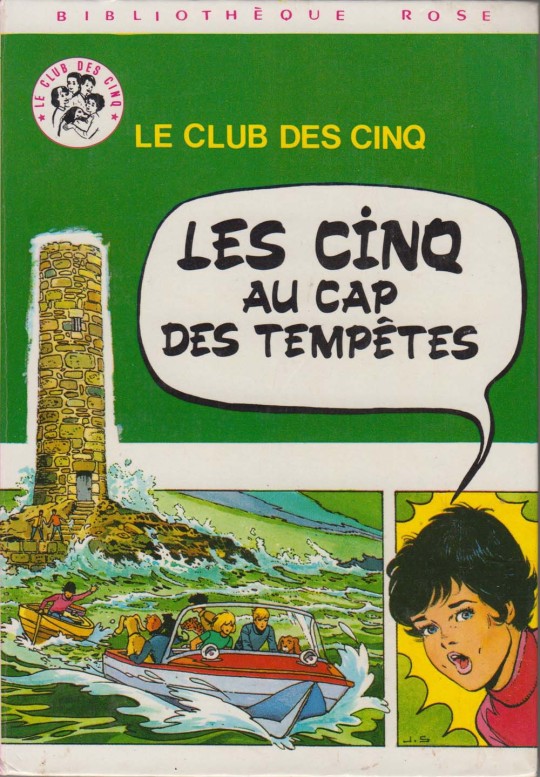
(Original cover by Jean Sidobre, 1972)
In this volume titled Les Cinq au cap des Tempêtes (lit. Five at Demon’s Rocks), the Five visit their old friend Tinker, who first made an appearance in Blyton’s #19 Five Go to Demon’s Rocks and came back in #21 Five Are Together Again.
As exciting as it is to revisit the extraordinary location that was the setting to the Five’s 19th adventure, don’t get your hopes up too much as the children will only make a brief visit there. It should also be noted that the lore surrounding the lighthouse has been slightly changed: in this story, the Haylings live in a large house in a village a few kilometers away from Kirrin Cottage, and the lighthouse is located off the coast of the same village. The lighthouse is not said to belong to the Hayling family; it is abandoned and in disrepair and has merely been “commandeered” by Tinker, who does not hold any owning rights. By contrast, in Blyton’s original lore, the lighthouse was stated as belonging to the Haylings, and it also seemed further away from Kirrin village as the Five had quite a long drive to reach it.
Now, let’s see what’s in store for our young detectives!
~~~~~~
Plot summary:
(Disclaimer: All provided translations are my own.)
The Five go to Demon’s Rocks to stay with Professor Hayling and his son, their friend Tinker. Along with Tinker’s monkey Mischief, the Five discover that another, rather unusual, pet has joined the Haylings’ household: a tamed cheetah named Attila, which was gifted to Professor Hayling by one of his friends.
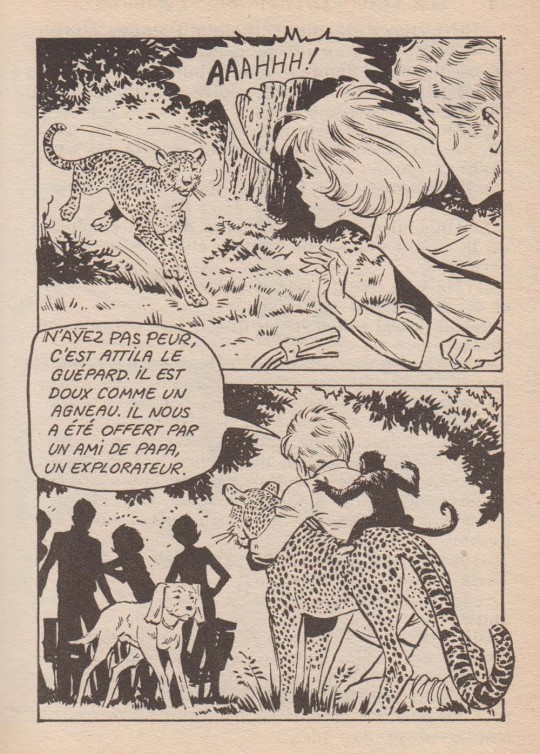
(Meeting Attila)
[TRANSLATION: Anne: Aaahhh ! Tinker: Don't be afraid, this is Attila, our pet cheetah. He's as gentle as a lamb. He was given to us by a friend of Dad's, an explorer.]
During their first night there, George is awakened by some noise and sees two shadowy silhouettes moving in the garden... The next morning, Attila has disappeared! The Five search the grounds with no results. Soon, Professor Hayling receives a ransom note that was left in the mailbox: Attila’s kidnappers cheetahnappers are demanding the formula for a groundbreaking, low-cost fuel newly-developed by the scientist. After weighing the pros and cons, Professor Hayling decides not to agree to the ransom.

(Discussing the request for ransom)
[TRANSLATION: Julian: I understand, Professor Hayling, that Attila pales in comparison to such a discovery. Tinker: You can’t possibly give up your formula, Dad. Dick: By the way, have you sent your formula to the Ministry? Professor Hayling: No, not yet. Those bandits are well-informed. Tinker: Why don't you call the police? Professor Hayling: We’re short on time. I won't be at ease until my formula is at the Ministry. Going to the police would mean several hours wasted.]
Per the cheetahnappers' instructions, the Haylings’ housemaid, Jenny, is tasked with bringing the professor’s answer inside a wicker basket to a certain location in the woods. The children keep watch in the area, hoping to follow the bandits, but to their surprise a dog comes to fetch the wicker basket instead! The children follow the dog (a cocker spaniel) to a nearby beach but they are too late as the animal seems to have been picked up by the bandits who have then taken off in a boat.
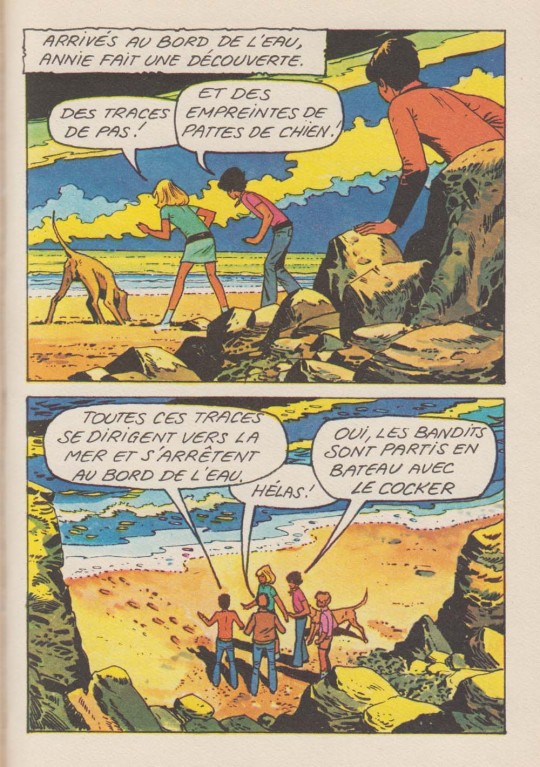
(Investigating on the beach)
[TRANSLATION: Narrator: Anne makes a discovery at the water's edge. Anne: Footprints! George: And dog paw prints. Dick: All these tracks are heading towards the sea and stop at the water's edge. Julian: Blow!* George: So the bandits left in a boat with the cocker spaniel.]
[*Side note: I am ridiculously happy for this opportunity to use the outdated interjection “blow!” in one of my personal translations. I always find it very difficult to use old-timey language accurately, so this was a boon. 😁]
The next day, a letter arrives for Tinker, telling him to steal the formula from his father in exchange for Attila. Tinker is given four days to accomplish this task and the drop-off is arranged the same way as before. The children spend the next few days scouting the area in hope that Timmy will smell Attila’s trail, but to no avail. They also visit a nearby zoo, reasoning that not everyone is able to handle a cheetah and the culprit may work there, but they don’t accomplish anything other than Mischief living up to his name and making mischief with the resident monkeys.
George devises a plan for them to follow the cheetahnappers' boat after dropping off Tinker’s reply, taking advantage of a local boating festival, but the plan fails when the bandits don’t take the itinerary that the children expected them to.
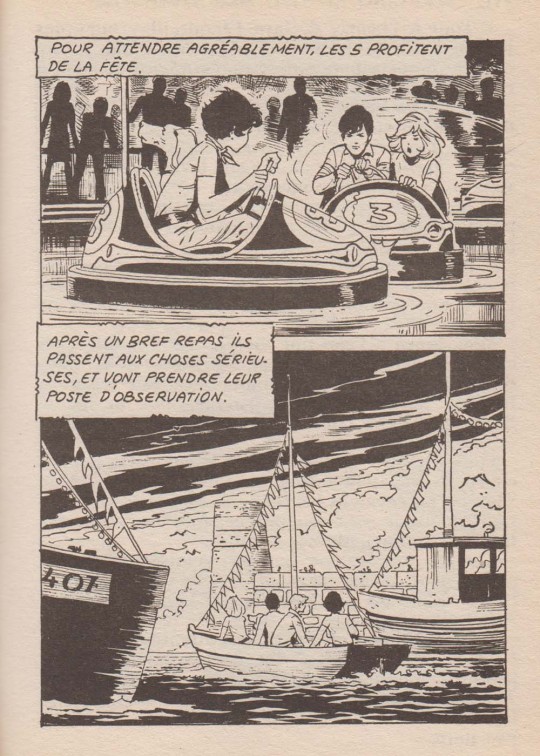
(The Five get to have fun at the festival, while poor Tinker is on watch duty at the drop-off point – bad luck for Tinker!)
[TRANSLATION: Narrator: The Five enjoy the festival until the agreed time. Narrator (second panel): After a short meal, they get down to business and take up their observation post.]
Tinker receives a new three-day ultimatum and the children decide to capture the bandits' mail dog.
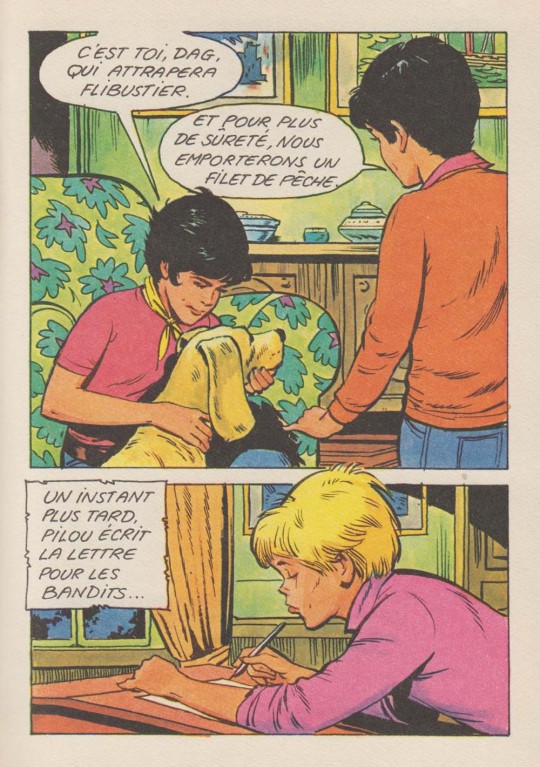
(Making plans to capture the bandits’ dog)
[TRANSLATION: George: It's you, Timmy, who'll catch Filibuster*. Dick: And to be on the safe side, we'll take a fishing net with us. Narrator: A moment later, Tinker writes a note to the bandits...]
[*Note: The children do not know the dog's name and decide to call him Flibustier (lit. Filibuster).]

(An adorable captive)
[TRANSLATION: Anne: Poor Filibuster! You don't look so scary. George (to both doggies): There! Here we go! You two make up.]
Realising that they can’t bring their dognapped hostage to Professor Hayling’s house, it occurs to Tinker that they can hide the dog in 'his' lighthouse.
When they arrive at the lighthouse, they are astonished to find Attila locked up in there, as the bandits chose this seemingly abandoned location to keep their captive away from prying eyes!
The bandits arrive at the lighthouse just as the children are discussing the situation and they only have time to hide. After some difficulties, they manage to evade the bandits and to escape by locking them up in the lighthouse. Meanwhile, a storm has risen, giving the children a few scares on the way back to the mainland.

(The children are stuck in the lighthouse while the bandits are in the next room, and Tinker has an idea: he shows Mischief how to close and lock a door so that Mischief will do the same and thus lock up the bandits discreetly… Monkey see, monkey do!)
[TRANSLATION: Narrator: The Five are desperate to find a solution when, suddenly, Tinker... Julian: Are you nuts? Tinker: Your turn, Mischief! Do as I do!]

(This picture mainly for the view of the lighthouse in the storm)
[TRANSLATION: Narrator: Outside, the storm is raging. Narrator (second panel): Mischief pushes against the door with all his might but... Anne: He'll never be able to do it.]
The police arrest the bandits, who were also wanted for other offenses in addition to cheetahnapping. The children go back to professor Hayling’s to celebrate their victory, and Tinker decides to adopt the cocker spaniel.
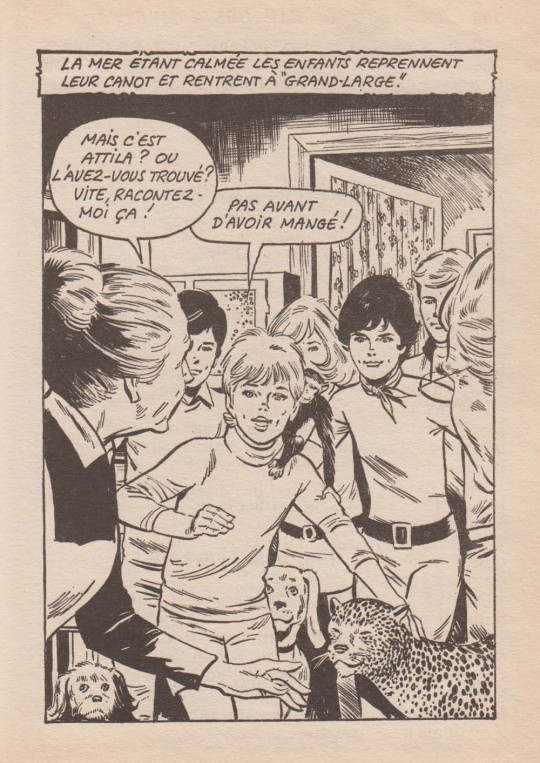
(Let’s celebrate!)
[TRANSLATION: Narrator: After the storm has calmed, the children take their boat and head back to Professor Hayling's house. Jenny: Is that Attila? Where did you find him? Tell me all about it! Tinker: Not until we’ve had a good meal!]
~~~~~~
Fun lines:
There’s an adorable moment in the lighthouse when Dick is holding the cocker spaniel in his arms while the children are hiding from the bandits:
« La petite troupe monta ainsi plusieurs marches. Mick avait pris Flibustier dans ses bras et lui parlait d’une voix rassurante en faisant mentalement des vœux pour que le cocker ne se mette pas à aboyer. Mais le chien, qui était d’un naturel placide, était trop heureux d’être caressé pour se soucier de donner de la voix. Il ferma les yeux et se laissa bercer comme un bébé. […] Entendant ses maîtres parler, Flibustier, alias Tommy, écarquilla un œil et agita une oreille. Mais Mick le serra doucement contre lui et Claude lui fourra un morceau de sucre dans la gueule. Béat, le chien resta tranquille. »
Translation:
“The little group climbed several steps. Dick had taken Filibuster in his arms and was talking to him in a reassuring voice, hoping that the cocker spaniel wouldn't start barking. But the dog, who was naturally placid, was only too happy to be cuddled to even think about making racket. The dog closed his eyes and let himself be rocked like a baby. […] Filibuster, a.k.a. Tommy, widened one eye and wiggled one ear upon hearing his owners’ voices. But Dick gave him a gentle squeeze and George stuffed a lump of sugar in his mouth. The dog was content and remained quiet.”
Cuuuuuuuute! 😍 I mean, Dick and the doggy are cute; George is… rather brusque!
[Note: Tommy is the dog's original name used by the bandits.]
~~~~~~
Cover art through the ages:
(Disclaimer: This is not an exhaustive list; sometimes the dates are difficult to pinpoint; and I have purposefully not included editions that re-used similar cover art, with differences only in layout and font style.)
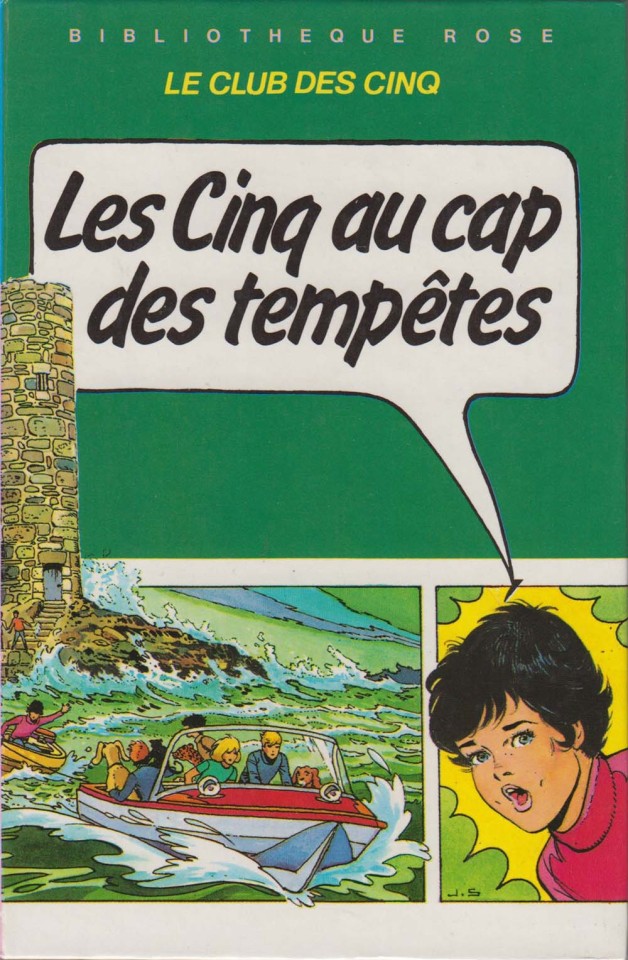
(Cover art by Jean Sidobre, Hachette, 1984 – minor layout changes compared to the original 1972 cover art)
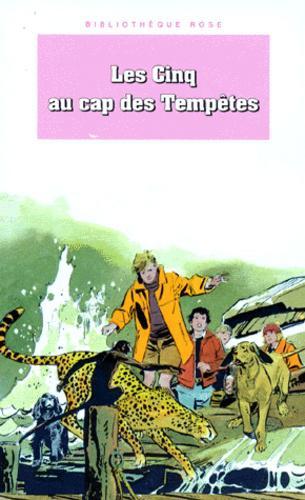
(Paul Gillon, Hachette, 1992 – the Five with their extended menagerie!)
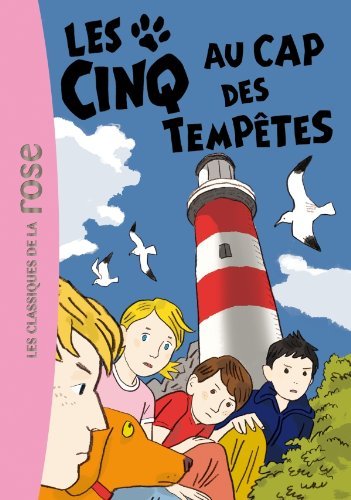
(Quite a peaceful scene depicted by Frédéric Rébéna, Hachette, 2011 – the red-and-white paint scheme makes for a striking visual, although it is not necessarily what I have in mind when I think about an abandoned lightouse in disrepair…)
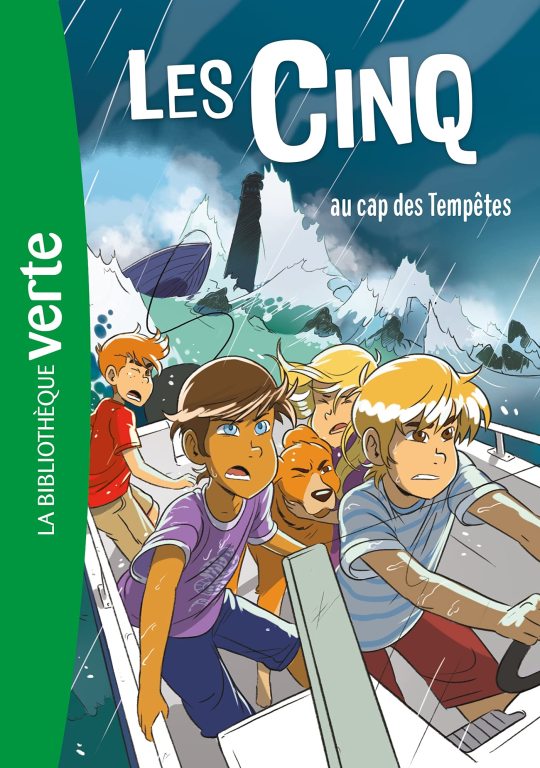
(Auren, Hachette, 2021 – facing the storm) [Note: You have to wonder where Tinker is, on all the modern covers…]
~~~~~~
Thanks for reading!
#papillon82 reads#famous five art nostalgia#famous five#le club des cinq#les cinq#claude voilier#illustrations#jean sidobre
4 notes
·
View notes
Note
Congrats on 15k followers!
Between Tides is probably my favorite fic of yours, and I'd love to hear what different takes you had for the cover backstory.
Between Tides was the first really long fic I ever wrote, and I had not yet developed my current outlining system. Suffice it to say, I did not have the "mystery" part of the plot very well determined in my head when I started. There were originally a couple more important characters that got cut, and part way through the story, Renji was supposed to get a part-time job teaching at a martial arts dojo (for plot reasons), and the original cover story was related to that. I guess I probably had to rewrite it when I junked that subplot. I had legitimately forgotten about this until I was looking through my notes. I have to say, it is astonishing how well the plot-plot of Between Tides hangs together, given the extremely seat-of-my-pants manner in which it was written.
Also, here's another fun fact that I had forgotten until I found it in there: the name Satonaka came from the main character of the film After Life, a movie about a counseling center for the recently dead . I watched it in my college Japanese film course and it permanently rewired my brain. It was out of print for a long time, but I just now found out that it was re-released by the Criterion Collection in 2021 and guess what this bitch will be doing with her 7-day free trial?
Enough of that. Here is the OG Satonaka teen love drama. I am warning you now that this is super-duper unedited and I'm kind of embarrassed about it, but I love you all very much, so I am letting you look at it anyway.
🌊 🌊 🌊
Fortunately, Rukia had now been doing this long enough that she was starting to be given tasks that she had done before. The sensation of responding “I just emailed it to you!” or “Check the printer!” every time her boss demanded something held some of the same satisfaction as a well-executed squad maneuver.
Unfortunately, this also meant that when the afternoon rolled around, Sunadori crashed extra hard. She moved her chair over to Rukia’s desk, and sat, leaned over, with her cheek on Rukia’s blotter.
Rukia wasn’t sure, but she thought they might be best friends now.
“I think I want to get back together with Haruta,” she sighed despondently.
“Hmmm,” Rukia replied. “Are there... pros and cons?”
“Did I mention we dated for a while? When we were much younger?”
“I could tell.”
“You could tell?”
“It’s...a common scenario,” Rukia hedged, glancing at the photo of Takeru on her desk.
“He was so angry about his dad’s death,” Sunadori sighed. “And it was like he blamed me. I couldn’t be around him. But he seems different now that he’s back from college. Everyone’s really sick of him talking about his aikido class, but I think it’s really helped him find himself.”
“Hmmm,” Rukia repeated. She was pretty sure this conversation was not generally appropriate for a Living World employment situation. On the other hand, she needed to get more intel on Oga, and this seemed like a really prime opportunity. Also, in the grand scheme of inappropriate captain-lieutenant dynamics she had heard stories about, this didn’t even merit an eyeblink.
“Mr. Satonaka seems very nice. I’m sure you two had a fairy-tale romance.” Sunadori stared at his photo wistfully. She was obviously an oversharer to start with, and for some reason, she was already weirdly invested in her employee’s love life. Rukia decided to throw out some bait.
She blew all the air out of her cheeks. “Hardly. It’s a long, stupid story, it wouldn’t be appropriate for work.”
Sunadori sat up sharply. Hook, line, and sinker. “It’s the week before New Year’s, no one gets anything done anyway. Tell me everything.”
It might seem counterintuitive for Rukia to tell Sunadori a long story when what she really wanted was for Sunadori to tell *her* things. But that wasn’t the way these things worked. She would share a long, juicy story, and then Sunadori would tell her more than she wanted to know, probably forever.
Also, Rukia was really quite fond of the romance manga backstory she and Renji had made up. He’d gotten to pull it out a few times, but she hadn’t, yet. She was really looking forward to telling the whole thing to Orihime when this was all over. Well, here was her big chance.
“Are you sure you want to hear this?”
Sunadori stared at her. “Stop stalling.”
“Okay, well, so, I took martial arts as kid. Our neighbors ran a dojo, an old family school, similar to jujutsu. I took it pretty seriously, marched through the belts, had a room full of trophies. When I was old enough, I started helping with the beginner classes to help pay for my own. I think I was fourteen when Takeru started coming, he would have been thirteen. He was taller than everyone in his class by a head, and he was terrible. Most of the beginners were little. I mean, you can start at any age, it’s just rarer. Anyway, Numata-sensei had me work with him one-on-one so he could get the basics down and move to a group with people closer to his own age. I was really worried that he was gonna be a jerk about having a short girl teach him this stuff, but he was actually very polite, and a good listener, and he started getting better.
“We ended up talking a lot, and it turned out that he didn’t have a very nice family life, and he’d been getting into trouble a lot at school, which is why his mom put him in martial arts. I lived right down the street from the dojo, and I guess he just started coming by after class, and the next thing I knew, he was just at my house all the time.
“For a long time, I thought he liked being around my family as much as he liked being around me. My mom made him sweets all the time, which she wouldn’t make for us. My dad called him ‘sport’. I have an older brother and he’s just a total stiff. He was the captain of the football team and the top student and has had his entire career planned out since he was 8 years old, and Takeru just idolized him.”
“Where’s your brother now?” Sunadori asked hopefully.
“He’s a banker in Tokyo,” Rukia replied.
“Married?”
“Only to his work. But he’s super married to his work. Would you rather hear about him?”
Sunadori flapped one hand. “No, you can get back to the story.”
Rukia sighed and hunched her shoulders. “This went on for a couple of years. Takeru was getting really good at jujutsu. Not as good as me, but we were competing at the same level, and sparring all the time. We went to regionals the year I was 16, and dominated so badly that the championship round was between me and him.” Rukia’s face went stiff. Acting. “He beat me. He knew my moves so well that he had worked out a counter-offense that he was saving until he had to face me in competition.” Renji had made up this entire part and refused all edits of it. “Afterwards, he insisted on walking me home, even though I wouldn’t speak to him, and he stopped me out in front of my house, and told me that now that he had defeated me, he felt like he could finally ask me if I would be his girlfriend.”
Sunadori gasped.
“It was really lame,” Rukia editorialized. “It was terrible. The worst.”
“You said yes, though? Right? Please tell me you said yes.”
“Yeah, of course I did. I was 16.”
Sunadori sighed, completely taken in. Point Renji.
“Anyway, we dated for a year or so, and then his dad, who was barely there to begin with, skipped out completely. He fell apart.” She frowned. “I tried to be there for him, but I was in my senior year, dealing with exams and college entrances, and I don’t think I realized how badly he was spiraling. Takeru dropped out of school, he said he needed to get a job to help his mom. Except he didn’t, he-- y’know, I don’t want to go into the details. My family, his mom, Sensei, our friends-- we all tried to help him, and he pushed us away. My brother was off at college in Tokyo at that time, and he called up Takeru and reamed him out, which let me tell you, was not helpful. Finally, I told him that I couldn’t be with him anymore. Then I moved away to college and blocked his number, as if he was ever going to call me again.”
Sunadori looked downright misty.
“You had to do the same with Oga?” Rukia asked, grimly.
Sunadori shrugged. “Oga never… got in any real trouble. He was just… mean. Hurtful.”
Rukia nodded. “Takeru had been in and out of trouble the whole time we were together. I never saw that side of him, he hid it pretty well. When we were apart, I told myself that he had lied to me, that he’d never been as good as I thought. But people are complicated, you know? And I dated a few other guys, and I knew none of them were as good as Takeru’s good side."
She took a deep breath. The next part was going to call for some fake tears, which was actually one of Rukia’s specialties. “So, I was home for New Year’s my senior year of college, and Takeru’s mom comes by. I guess she and my mom had kept in contact, although my mom had never mentioned it. She told me that the summer I left for school, he had enlisted in the JGSDF, and that there had been an accident-- I mean, it wasn’t an accident, it was an IED-- but he was in the hospital. He was going to live, but he they weren’t sure he was going to keep the leg.” One tear, sniff, wipe it away with the heel of her hand.
Sunadori looked downright stricken.
“I mean, he had been a downright rat-bastard, but we had some good times, too, and his mom said he had cleaned himself up a lot, so I thought, maybe I’ll write him a letter. The guy’s in the hospital, may end up with a prosthesis, the least I can do is send him a get-well card. I sat down and wrote him a twelve page letter. I didn’t know I still had twelve pages of feelings left for him. I stuffed that in my desk, and got him a card from the drug store instead. I felt bad after I sent it, so I wrote him a one-page letter of the absolute blandest nothing, and sent that to him. And he wrote back.”
“What did he say?” Sunadori asked breathlessly.
“It wasn’t very long. Thanks for writing mostly. That he hoped I was well. There was nothing in it that indicated he wanted anything from me or expected anything of me.” She frowned. “It broke my heart. So I wrote him a longer letter, just nice things, happy things, things that I remembered would make him smile. And he wrote back to that, too, and then we started texting, and calling. His leg got better. I was back at school, finishing up my last semester, when they let him go home, to his mom’s. I took the train home that weekend, just to see him. I didn’t tell him I was coming.”
“Oh, how romantic! What did he say when he saw you?”
“Well, here’s the thing. You should tell people when you’re visiting them, especially when they’re just out of the hospital. He looked terrible and he was in a lot of pain, and I think he was a little embarrassed. But that’s when I really knew that he had changed. Because through all that pain, he was so careful with everything he said and so gentle, all he cared about was that he didn’t accidentally push me away again. At the end of the weekend, he made me promise that I wouldn’t let him distract me from school and that I would have a strong finish.”
“Mmm, I would have been distracted.”
Rukia’s brows creased. “Ma’am, I assure you I worked very hard on all my coursework, and am a very qualified employee.”
Sunadori rolled her eyes. “You already have the job, get on with it.”
“Well, the job market was pretty tight, and my dad knew someone who needed some part time office help, so I moved back home after graduation. I found out that Takeru’s mom was too busy to get him to PT most of the time, which was downright stupid, since it was basically a miracle that he kept the leg at all. So I started driving him around and at first it was just making sure he made it to all his appointments, and helping him with his veterans affairs paperwork, and then we were just always together again.”
#1500 follower deleted scenes fest#lol at sunadori trying to get it with byakuya GOOD LUCK GIRL#my queue of these is nearly empty in case anyone was hesitating to send 'em in
4 notes
·
View notes
Text
Traditional Marketing vs Digital Marketing: Which One Is Right for Your Business?
Introduction
According to the Best Digital Marketing Company In Pune now day’s businesses are constantly exploring various marketing strategies to promote their products and services effectively. Traditional marketing and digital marketing are two primary approaches that companies can adopt to reach their target audience. This article aims to provide an SEO-friendly guide comparing traditional marketing and digital marketing, helping you determine the right approach for your business.
Traditional Marketing:
Traditional marketing refers to conventional advertising channels that have been around for decades. These include print media (newspapers, magazines), broadcast media (television, radio), billboards, direct mail, and event sponsorships. Traditional marketing relies on physical presence and engages with consumers in the real world.
Pros of Traditional Marketing
Tangible Presence: Traditional marketing offers a physical presence that consumers can experience and remember, creating a lasting impression.
Local Targeting: Traditional methods allow businesses to target specific local audiences effectively, making it ideal for small businesses with geographically defined customer bases.
Established Trust: Over time, traditional marketing channels have built consumer trust and credibility.
Cons of Traditional Marketing:
High Costs: Traditional marketing campaigns often require significant financial investments, especially for television or print advertisements.
Limited Analytics: Measuring the effectiveness of traditional campaigns can be challenging, making it difficult to track the return on investment (ROI) accurately.
Lack of Interactivity: Traditional marketing channels offer limited opportunities for two-way communication with consumers, inhibiting engagement and real-time feedback.
Digital Marketing:
Digital marketing encompasses a wide range of strategies that utilize online platforms and channels to promote products or services. This includes search engine optimization (SEO), social media marketing, content marketing, email marketing, pay-per-click (PPC) advertising, and more. Digital marketing enables businesses to connect with a global audience, engage in real-time interactions, and measure campaign performance with precision.
Pros of Digital Marketing:
Wider Reach: Digital marketing allows businesses to reach a broader audience, transcending geographical boundaries and targeting specific demographics or interests.
Cost-Effective: Digital marketing methods often require lower budgets compared to traditional marketing, making it accessible to businesses of all sizes.
Targeted Advertising: Online platforms offer advanced targeting options, enabling businesses to reach their ideal audience based on demographics, interests, and online behavior.
Real-Time Analytics: Digital marketing provides detailed analytics, allowing businesses to measure the success of their campaigns, track website traffic, and make data-driven decisions.
Interactivity and Engagement: Digital marketing channels offer interactive features such as comments, likes, shares, and direct messaging, fostering engagement and building relationships with consumers.
Cons of Digital Marketing:
Constant Updates: Digital marketing strategies require staying updated with ever-changing algorithms, platforms, and trends, demanding continuous learning and adaptation.
Potential Information Overload: With a vast amount of digital content available, capturing and maintaining consumer attention can be challenging.
Determining What's Right for Your Business: When deciding between traditional marketing and digital marketing, consider the following factors:
Target Audience: Understand your audience's preferences, online behavior, and demographics to determine which approach will effectively reach and engage them.
Budget: Assess your available marketing budget and consider the cost-effectiveness of traditional and digital marketing channels.
Industry and Competition: Research industry-specific marketing trends and analyze how your competitors are reaching their target audience.
Business Goals: Align your marketing strategy with your business objectives, whether it's increasing brand awareness, generating leads, or driving online sales.
Conclusion:
Choosing between traditional marketing and digital marketing depends on your business's unique needs, target audience, budget, and objectives. While traditional marketing offers a tangible presence and local targeting, digital marketing provides a wider reach, real-time analytics, and interactive engagement. In many cases, a combination of both approaches can yield optimal results. By understanding the advantages of each and tailoring your marketing strategy accordingly, you can position your business for success in the digital era.
#Best Digital Marketing Company in Pune#Best Social media marketing company in Pune#seo services company#Best Social Media Marketing Agency#Digital Marketing Company In India#Digital Marketing Agency#Traditional Marketing vs Digital Marketing
2 notes
·
View notes
Text
Glossy or Matte Pictures: Choosing the Perfect Finish for Printing in London
When it comes to printing in London, choosing between glossy and matte picture finishes is a decision that can significantly impact the final look and feel of your prints. Whether you’re printing photographs, marketing materials, or personal projects, understanding the pros and cons of each finish will help you make the best choice for your needs.
In this guide, we’ll explore the key differences between glossy and matte finishes, their ideal applications, and how Printpal London, a top printing company with over a decade of experience, can help you achieve stunning results.

Glossy Pictures: Vibrant and Eye-Catching
Glossy pictures are known for their shiny, reflective surface, which enhances color vibrancy and sharpness. This finish is ideal for projects that demand attention and showcase intricate details.
Advantages of Glossy Pictures:
Enhanced Colors: Glossy prints make colors pop, giving your images a vibrant and lively look.
High Detail: The reflective surface highlights intricate details, making it perfect for high-resolution images.
Professional Appeal: Often associated with premium quality, glossy finishes are ideal for portfolios and presentations.
Ideal Applications:
Photography: Showcase your best shots with rich colors and stunning details.
Marketing Materials: Brochures, flyers, and posters that need to grab attention.
Event Memorabilia: Wedding or event photos that require a polished look.
Considerations: While glossy pictures look stunning, they are prone to fingerprints and glare. They may not be suitable for projects displayed under direct light or frequently handled.
Matte Pictures: Subtle and Sophisticated
In contrast, matte pictures have a non-reflective, smooth surface that exudes a subtle and sophisticated vibe. This finish is ideal for understated elegance and practical applications.
Advantages of Matte Pictures:
No Glare: Matte finishes reduce glare, making them perfect for framing and displaying under bright lights.
Resistant to Smudges: They are less likely to show fingerprints and smudges, making them durable.
Soft Aesthetic: Offers a muted, professional look that’s great for artistic projects.
Ideal Applications:
Framed Artwork: Perfect for prints that will be displayed under glass.
Text-Heavy Materials: Ideal for brochures or handouts where readability is key.
Business Cards: Provides a sleek, professional appearance.
Considerations: While matte finishes are durable, they may not capture the same level of vibrancy as glossy pictures. This makes them less ideal for projects requiring vivid colors.
How to Choose Between Glossy and Matte Finishes
The choice between glossy or matte pictures depends on several factors, including the purpose of the print, the environment it will be displayed in, and your personal preferences.
Ask Yourself:
What is the purpose of the print?
For vibrant and eye-catching designs, go glossy.
For subtle and professional projects, choose matte.
Where will it be displayed?
In bright or well-lit areas, matte reduces glare.
For a bold statement, glossy stands out.
How will it be used?
For frequently handled materials, matte is more practical.
For high-impact visuals, glossy is a better choice.
Why Choose Printpal London for Your Printing Needs?
If you’re searching for the best printing in London, Printpal London is your go-to solution. With over a decade of experience, we specialize in producing high-quality prints tailored to your specific needs.
Our Services Include:
Custom printing with glossy or matte finishes.
Expert advice to help you choose the perfect finish.
Quick turnaround times for projects of all sizes.
At Printpal London, we understand the importance of delivering exceptional results. Whether you need vibrant marketing materials or sophisticated artistic prints, our skilled team is here to ensure your vision becomes reality.
Conclusion
When deciding between glossy or matte pictures, it’s essential to consider your project’s purpose, environment and desired aesthetic. Both finishes have unique benefits that can elevate your prints in different ways.
For top-notch printing in London, trust Printpal London to deliver outstanding results. Contact us today to discuss your project and let us help you create prints that leave a lasting impression.
0 notes
Text
Top 10 Football Jerseys Every Fan Should Own Kit Al Hilal
Featuring Kit Al Hilal, Jersey Al Hilal 2025, and Shirt Al Hilal 2024/2025
Football jerseys aren't just symbols of team pride--they're carefully crafted pieces of apparel designed to satisfy the varied demands of players and fans alike. But there aren't all jerseys made in the same manner. The difference between original and counterfeit jerseys is the most common source of confusion. In this post, we'll take a look at the major differences, and help you pick the ideal jersey that meets your requirements, using information from Kit Al Hilal, Jersey Al Hilal 2025, and the shirt Al Hilal 2024/2025.

Understanding the Basics
Both authentic replica and original jerseys sport the official team branding and designs, however their uses differ.
legitimate Jerseys made to be able to match the exact specifications of what players wear on the field.
Replica Jerseys: Tailored for fans, offering ease of use and durability for casual wear.

1. Genuine Jerseys: Engineered for Performance
legitimate jerseys are created with the purpose of performance in mind. focusing on functionality and technological advancements.
Characteristics of bona fide Jerseys
Ultra Slim Fit: These jerseys are designed to reduce drag and improve flexibility on the field.
Advanced Fabrics materials like moisture-wicking materials keep players cool and dry during matches.
Ventilation Technology Mesh panels or laser-cut perforations have been used in the past for better airflow.
Player Information: Genuine jerseys often contain additional specifics, like heat-pressed logos, as well as lighter sponsor prints, to reduce weight.
Pros
Ideal for athletes or fans who want a sports jersey with a high-performance feel.
The exact same as what players, for instance those wearing Kit Al Hilal, use during games.
Cons
Price point higher.
Slim fit may not suit all body types.
Example: Jersey Al Hilal 2025
The Jersey Al Hilal 2025 is anticipated to include innovative materials and designs which makes it perfect for those who love performance. The modern style highlights the iconic blue of the club with new details that will enhance your comfort on the field.

2. Replica Jerseys: Designed for Fans
Replica jerseys are designed for daily wear, offering convenience without sacrificing fashion.
aspects of Replica Jerseys
The Relaxed Fit Created for a looser, more forgiving fit that can accommodate a range of body types.
Strong Fabrics Made with slightly heftier materials for long-lasting wear.
Embroidered Logos In place of heat-pressed logos, replicas often employ embroidery, which contributes to the longevity.
Affordable Prices: Priced lower as original versions, thereby making them accessible to a broader audience.
Pros
Wear it casually or helping your team out at matches.
Cost-effective compared to real jerseys.
Cons
Lacks some of the specific features of authentic jerseys.
It is slightly heavier because of the use of different materials.
Example: Shirt Al Hilal 2024/2025
The Shirt Al Hilal 2024/2025 might offer fans a comfortable fit and sturdy construction, but still keeping the club's classic blue and white design. It's perfect for watching Al Hilal from the stands or showing support around the town.
3. Key Differences at a Glance
Feature real Jerseys Replica Jerseys Fit Slim and well-tailored Casual and relaxed Fabric Lightweight, performance-focused Durable, fan-friendly Logos Lightweight, heat-pressed Embroidered or screen-printed Price Higher Lower Purpose Athletic performance Fandom and everyday wear
Choosing the Right Jersey for You
For Players or Fitness Enthusiasts
Go for original jerseys such as one from Kit Al Hilal for their superior performance and stylish fit.
For Fans and Casual Wear
You can choose replica jerseys such as the shirt Al Hilal 2024/2025, for their comfort longevity, durability, as well as affordability.
For Collectors
Both of them are wonderful additions Both are great, however real jerseys will have more value due to their player-grade style.
Caring for Your Jersey
For the sake of maintaining the durability in appearance:
Get your hair cleaned on an easy cycle with cold water.
Do not together bleach or harsh detergents.
Air dry to preserve the fabric and print details.
Shop here: Jersey Al Hilal 2025
Conclusion
The decision between original the real jersey and replica jerseys ultimately is based on your personal needs and preferences. Whether you're drawn to the performance-oriented qualities such as the high-performance features of kit Al Hilal or the style and comfort of the Shirt Al Hilal 2024/2025, both deliver a means to show your support for your team in style. After analyzing the differences you'll make an informed choice and sport your Al Hilal jersey with pride regardless of whether you're in the pitch and in the stand.
1 note
·
View note
Text
Banarasi Cotton Sarees vs. Silk Sarees: What’s Best for You?
When it comes to choosing the perfect saree, especially for special occasions or everyday wear, two types often stand out: Banarasi Cotton Sarees and Silk Sarees. Each holds a distinct charm and legacy, deeply rooted in Indian culture and tradition. The decision between Banarasi cotton and silk sarees can be challenging as both have their unique appeal, aesthetics, and benefits. In this article, we will explore the key differences, pros and cons, and help you make the best choice based on your needs and preferences.
Understanding Banarasi Cotton Sarees
Banarasi cotton sarees are renowned for their lightweight feel, comfortable texture, and elegant appearance. Banarasi cotton saree in india Originating from the cultural heart of Varanasi (Banaras), these sarees reflect the city’s rich textile heritage. They combine the softness of cotton with intricate zari (gold or silver thread) work, often featuring floral and foliate patterns that are characteristic of the region.
Advantages of Banarasi Cotton Sarees
Comfortable and Breathable: Banarasi cotton sarees are incredibly breathable, making them an ideal choice for warm climates. The natural fibers allow air circulation, keeping you cool and comfortable throughout the day.
Lightweight and Easy to Drape: Unlike heavier fabrics, cotton sarees are easy to drape and carry, making them perfect for both casual and semi-formal occasions. Authentic Banarasi saree in india Their lightweight nature is especially appealing for long events or day-to-day wear.
Versatile Designs: With a mix of traditional and contemporary patterns, Banarasi cotton sarees are versatile and can be styled for various occasions. The intricate motifs and zari work add a touch of elegance without being overwhelming.
Low Maintenance: Compared to silk, Banarasi cotton is easier to care for. It doesn’t demand as much attention in terms of dry cleaning or special handling, making it a practical choice for everyday use.
Disadvantages of Banarasi Cotton Sarees
Less Glossy: Cotton sarees tend to have a matte finish, lacking the shine that silk sarees offer. Designer Banarasi saree in india If you are looking for something more glamorous, Banarasi cotton might fall short.
Less Formal: While they are elegant, Banarasi cotton sarees may not exude the same level of grandeur as silk sarees, making them less suitable for high-profile events or formal weddings.
Understanding Silk Sarees
Silk sarees have long been associated with opulence, luxury, and celebration. Whether it’s a wedding, a festive occasion, or a formal gathering, silk sarees are often the go-to choice. silk banarasi saree in india They come in various types, with Banarasi Silk being one of the most popular varieties, known for its richness and detailed weaving.
Advantages of Silk Sarees
Luxurious Shine: Silk sarees are known for their lustrous finish, which adds a regal touch to any ensemble. The sheen of pure silk is unmatched, making it the preferred choice for weddings, festivals, and grand celebrations.
Rich Textures and Designs: The texture of silk, combined with complex zari work and embroidery, creates a lavish look. Digital Print Sarees in india Many silk sarees, especially Banarasi Silk, feature intricate patterns, making them a statement piece.
Durability: Silk sarees, when properly maintained, can last for generations. Sarees Categories in india They are sturdy and age beautifully, often becoming family heirlooms passed down through generations.
Warm and Comfortable: Despite being luxurious, silk is also a natural insulator, providing warmth, which makes it suitable for colder climates or evening events.
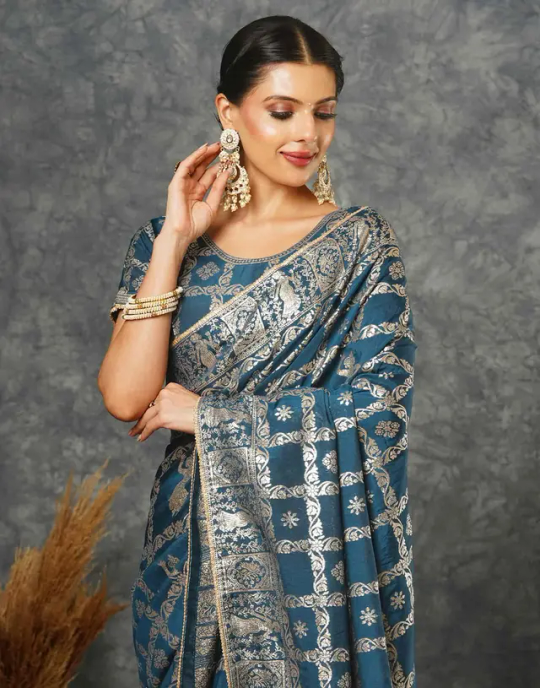
Disadvantages of Silk Sarees
Heavy and Difficult to Manage: Pure silk sarees can be heavy, especially with extensive embroidery or zari work. This can make them challenging to drape and carry for extended periods.
High Maintenance: Silk requires careful handling, dry cleaning, and proper storage to maintain its shine and texture. Patola Sarees in india It’s not as forgiving as cotton in terms of care, which can be a downside for everyday use.
Expensive: Authentic silk sarees can be quite costly, especially those with pure silk and intricate detailing. This makes them less accessible for everyday wear or casual occasions.
Key Differences Between Banarasi Cotton and Silk Sarees
1. Fabric and Feel
Banarasi cotton sarees are soft, lightweight, and comfortable, making them ideal for hot and humid weather. Kanjivaram Sarees in india Silk sarees, on the other hand, are heavier and have a smoother, more luxurious texture that feels elegant against the skin. The choice of fabric plays a crucial role in how comfortable the saree feels during long events.
2. Shine and Appearance
Silk sarees have a natural sheen that gives them a glamorous look, making them perfect for formal events. In contrast, Banarasi cotton sarees offer a more subtle, matte finish, making them suitable for both casual and semi-formal settings.
3. Maintenance and Care
Banarasi cotton sarees are easier to maintain, often requiring simple home washing and occasional ironing. Embroidered Sarees in india Silk sarees demand more attention, needing dry cleaning and careful storage to prevent damage from humidity and pests.
4. Durability and Longevity
Silk sarees, if maintained properly, can last for decades and are often seen as an investment piece. Banarasi cotton sarees are also durable but may not withstand the test of time as well as silk, especially when it comes to preserving intricate designs and patterns.
5. Versatility
While both sarees are versatile, Banarasi cotton sarees are more suitable for daily wear, office attire, and informal gatherings due to their lightweight and breathable nature. Banarasi Sarees in india Silk sarees, however, are best suited for grand events, religious ceremonies, and weddings where a more sophisticated look is desired.
When to Choose Banarasi Cotton Sarees
For Comfort: If you prioritize comfort and ease of movement, especially in warm weather, Banarasi cotton sarees are a fantastic choice.
For Daily Wear: Their low maintenance and comfortable drape make them perfect for day-to-day wear or office attire.
For Semi-Formal Events: Choose Banarasi cotton for events that require a touch of elegance without being overly formal.
Budget-Friendly: If you want a stylish yet budget-friendly saree, Banarasi cotton is an excellent option.
When to Choose Silk Sarees
For Grand Occasions: Weddings, festivals, and grand celebrations are where silk sarees truly shine.
For a Statement Look: If you want to make a bold statement, the glossy finish and intricate designs of silk sarees are ideal.
For Heritage Value: Silk sarees are often seen as an investment piece, passed down from generation to generation. If you value tradition and heritage, silk is the way to go.
For Colder Climates: Silk sarees provide a degree of warmth, making them suitable for cooler weather or evening functions.
Conclusion
Deciding between Banarasi cotton sarees and silk sarees ultimately depends on the occasion, personal comfort, budget, and style preferences. If you’re looking for a comfortable, versatile option that can be worn on a regular basis or for semi-formal gatherings, Banarasi cotton is a great choice. However, if you want a saree that makes a statement, adds a touch of luxury, and is perfect for grand celebrations, then a silk saree is the way to go. Each type has its own unique beauty, and the best choice is the one that aligns with your individual style and needs.
Get In Touch Name- Banarashe Website-https://banarashe.com Contact-+91 79054 81412 Email- [email protected]
#Designer Banarasi saree in india#silk banarasi saree in india#Digital Print Sarees in india#Patola Sarees in india#Kanjivaram Sarees in india#Embroidered Sarees in india#Banarasi Sarees in india#Sarees Categories in india
0 notes
Text
Market analysis
The postelection rally has hit some turbulence in recent days, giving investors a bumpy ride in the near term. However, these choppy markets can harbor plenty of opportunities — for those who know where to look.
Investors shouldn’t focus too much on short-term volatility as they position their portfolios. Recommendations from Wall Street can help them make informed decisions on stocks and seek solid long-term returns.
Top-rated analysts pay attention to multiple aspects when selecting stocks of companies with solid fundamentals and strong execution.
Bearing that in mind, here are three stocks favored by the Street’s top pros, according to TipRanks, a platform that ranks analysts based on their past performance.
Amazon
We start this week with e-commerce and cloud computing giant Amazon (AMZN). The company impressed investors with third-quarter beats on the top and bottom lines, fueled by strength in its cloud and advertising businesses.
In reaction to the solid Q3 print, Monness analyst Brian White reaffirmed a buy rating on Amazon stock and boosted the price target to $245 from $225. While the analyst acknowledged regulatory pressures, he remains bullish on AMZN as he thinks it will continue to “capitalize on the cloud, expand its digital ad business, innovate with AI, realize efficiencies from a regional fulfillment network, and leverage a leaner cost structure.”
White highlighted that Amazon’s revenue growth accelerated to 17%, with significant profit upside. Notably, Q3 operating profit exceeded his estimates, driving record operating margin at 11%. He also noted the sharp sequential rise in operating margins at Amazon Web Services, or AWS, and International business. Based on the solid results, the analyst raised his revenue and earnings per share estimates for 2024 and 2025.
White also pointed out Amazon’s focus on reducing costs via improved efficiencies and new initiatives such as regionalizing its U.S. fulfillment network. The company now aims to regionalize its U.S. inbound network and leverage advanced robotic innovations across its fulfillment network.
Overall, White sees lucrative growth potential for Amazon across e-commerce, AWS, digital media, advertising, Alexa, robotics, artificial intelligence and other avenues.
White ranks No. 38 among more than 9,100 analysts tracked by TipRanks. His ratings have been profitable 69% of the time, delivering an average return of 20.4%. See Amazon Stock Charts on TipRanks.
Uber Technologies
We now move to this week's second pick, ride-sharing platform Uber Technologies (UBER). The company recently delivered better-than-expected third-quarter revenue and earnings. However, it missed Wall Street's expectations for Q3 gross bookings.
Nonetheless, Evercore analyst Mark Mahaney remains bullish on UBER stock. He reiterated a buy rating with a price target of $120, following a series of investor meetings with management.
Mahaney thinks UBER will gain from autonomous vehicle rollouts, given its position as the largest ride-sharing demand aggregator. He added that better availability of robotaxis on the Uber platform will drive improved customer service through shorter wait times, broader ride selection and possibly lower prices.
"UBER believes that the economics it can offer AV owners can be compelling, allowing them to generate very high margins and better fleet utilization than they can develop on their own," said Mahaney.
Based on his discussions with management, Mahaney explained that the deceleration reflecting in Uber's Mobility bookings growth in Q3 and the estimate for Q4 is due to the negative demand elasticity caused by the surge in insurance costs and a slowdown in "party hour" bookings, or those that take place during evenings and weekends. He thinks this deceleration will moderate, given the slowdown in the rate of insurance cost increases, growth prospects of new products such as Uber for Teens and Uber for Business as well as potential improvement in consumer discretionary demand.
Finally, Mahaney remains confident about Uber's ability to consistently boost its earnings before interest, taxes, depreciation and amortization and free cash flow margins over the next three to five years, supported by multiple measures to drive cost efficiencies.
Mahaney ranks No. 34 among more than 9,100 analysts tracked by TipRanks. His ratings have been successful 64% of the time, delivering an average return of 28.9%. See Uber Technologies Stock Options on TipRanks.
Block
Finally, let's look at fintech giant Block (SQ). The company, formerly known as Square, narrowly beat analysts' earnings expectations but missed revenue estimates for the third quarter.
Following the results, BTIG analyst Andrew Harte discussed the positives and negatives of Block’s Q3 performance. He noted that the company’s initial FY25 gross profit growth guidance of at least 15% almost met the consensus estimate at 14.9%. However, Q4 gross profit outlook of 14% fell short of expectations due to the shift in the timing of certain expected benefits from Q4 to next year.
The analyst thinks CEO Jack Dorsey did a good job in highlighting the company’s lending products and explaining how they are fueling the growth of Block’s ecosystem. Despite the soft Q4 guidance and management’s commentary indicating that investors will have to wait until the second half of 2025 for growth acceleration, SQ stock continues to be a top pick for BTIG.
Harte cited several reasons for his bullish stance, including Block’s track record of surpassing guidance and the stock’s attractive valuation at 12-times FY25 EV (enterprise value)/EBITDA. He added that the company is in the early days of fueling increased product adoption in both its Cash and Square ecosystems, indicating continued growth potential ahead.
“Block is just beginning to integrate its Cash App and Square ecosystems, which could create meaningful flywheel effects over time,” said Harte while reiterating a buy rating on the stock with a price target of $90.
Harte ranks No. 152 among more than 9,100 analysts tracked by TipRanks. His ratings have been profitable 75% of the time, delivering an average return of 63.8%. See Block Hedge Funds Activity on TipRanks.
0 notes
Text
Moulds in Rotomoulding: Materials, Design, and Maintenance
The quality and efficiency of the rotomoulding process heavily rely on the moulds. These hollow forms, filled with plastic powder and rotated in an oven, are crucial for creating the desired shapes. Let's dive into the world of rotomoulding moulds, exploring their materials, design considerations, and essential maintenance practices.
1. Mould Materials: Striking a Balance
Choosing the right mould material is a critical decision that impacts cost, durability, and product quality. Here are some common options:
Cast Aluminum:
Pros: Excellent heat transfer, relatively lightweight, good for complex shapes, cost-effective for medium production runs.
Cons: Can be susceptible to damage if dropped or mishandled, may require more frequent maintenance.
Machined Aluminum:
Pros: Higher strength and durability than cast aluminum, precise tolerances, ideal for high-volume production and intricate designs.
Cons: Higher initial cost compared to cast aluminum.
Steel:
Pros: Extremely durable and long-lasting, excellent for very large parts or demanding applications, withstands high temperatures and pressures.
Cons: Significantly higher cost, heavier and more difficult to handle.
Electroformed Nickel:
Pros: Produces incredibly smooth and detailed surfaces, ideal for complex geometries and intricate textures.
Cons: Limited to smaller parts, delicate and requires careful handling, expensive.
2. Design Considerations: Shaping Success
Effective mould design is essential for producing high-quality rotomoulded parts. Key factors to consider include:
Wall Thickness: Ensure uniform wall thickness throughout the part to avoid thin spots or excessive material buildup.
Draft Angles: Incorporate sufficient draft angles (typically 1-3 degrees) to facilitate easy part removal from the mould.
Undercuts and Complex Geometries: Carefully plan for undercuts, ribs, and other complex features to ensure proper powder distribution and prevent air traps.
Parting Lines: Strategically locate parting lines to minimize their visibility and ensure a clean separation of mould halves.
Venting: Adequate venting is crucial to allow air and gases to escape during the heating process, preventing defects like bubbles and voids.
Surface Finish: The mould's surface finish directly influences the final part's appearance. Smooth, polished moulds yield glossy parts, while textured moulds create textured surfaces.
3. Maintenance: Prolonging Mould Life
Proper mould maintenance is vital for ensuring consistent product quality and maximizing mould lifespan. Key maintenance practices include:
Cleaning: Regularly clean the mould to remove any residual plastic, dirt, or debris that can affect the surface finish or hinder heat transfer.
Inspection: Inspect the mould for any signs of damage, such as cracks, dents, or warpage. Address any issues promptly to prevent further deterioration.
Lubrication: Properly lubricate moving parts like hinges and latches to ensure smooth operation and prevent wear and tear.
Storage: Store moulds in a clean and dry environment to prevent corrosion and damage.
4. Advanced Mould Technologies:
The rotomoulding industry is constantly evolving, with advancements in mould technology driving innovation and efficiency.
Rapid Prototyping: Techniques like 3D printing are used to create prototypes and test mould designs quickly and cost-effectively.
Multi-Cavity Moulds: These moulds allow for the simultaneous production of multiple parts, increasing productivity and reducing cycle times.
Insert Moulding: Integrating metal inserts or other components directly into the rotomoulding process expands design possibilities and functionality.
By understanding the intricacies of mould materials, design principles, and maintenance practices, rotomoulders can optimize their processes, produce high-quality parts, and achieve long-term success.
0 notes